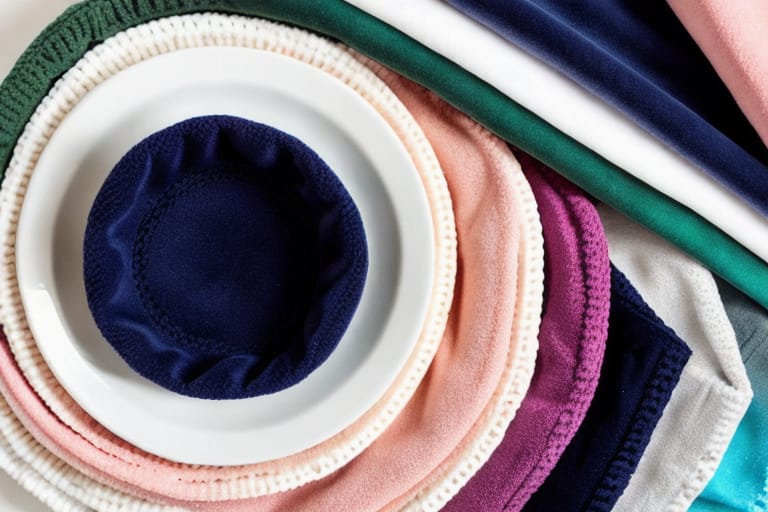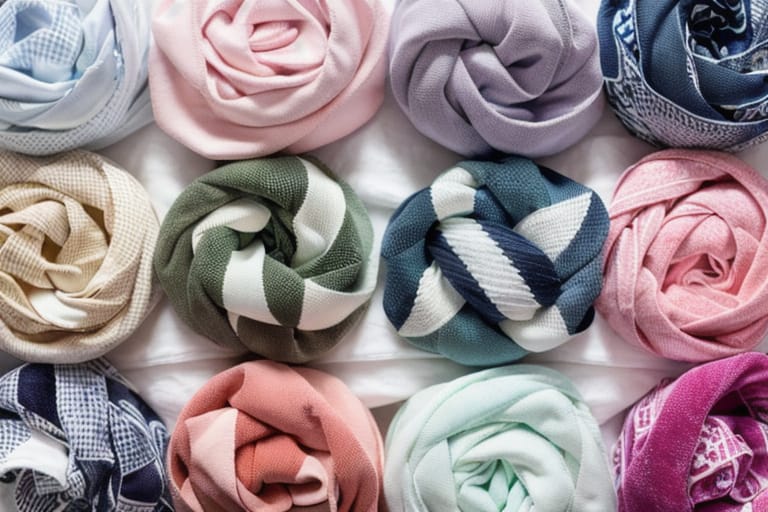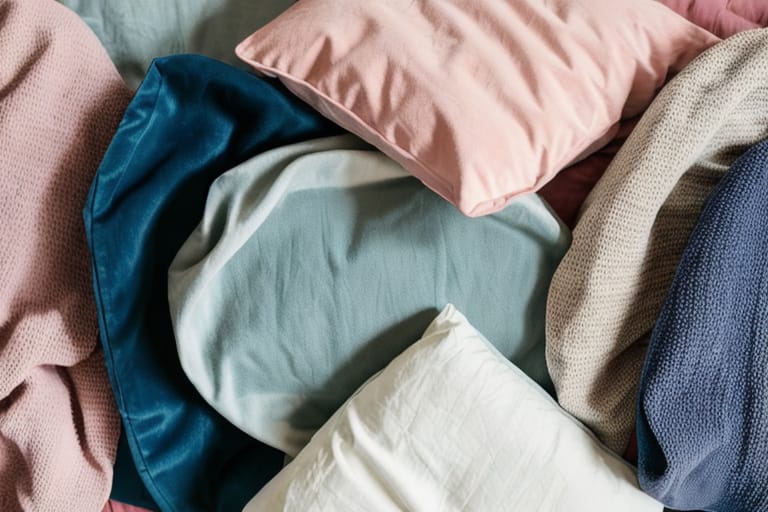When picking out bedding for your bedroom, one key decision is whether you need a duvet cover to go over your down-filled comforter. Some people use a duvet cover for decorative purposes or to protect the comforter. Others skip the duvet altogether. So which route is best?
What Exactly Is a Duvet Cover?
Before weighing the pros and cons, let’s clearly define what a duvet cover is.
- A duvet cover is a large fabric bag with an opening on one side that contains the comforter or duvet insert. It has ties or buttons to secure it around the comforter.
- It protects the comforter from body oils, moisture, allergens, and other contaminants.
- It can be removed and washed frequently while the comforter remains protected inside.
- It comes in a range of colors, patterns, and materials to coordinate with bedroom decor.
The Difference Between a Comforter and a Duvet
While the terms comforter and duvet are sometimes used interchangeably, they refer to slightly different things:
- Comforter – The filled bed covering that provides warmth for sleeping.
- Duvet insert – A comforter protected by a duvet cover.
- Duvet cover – The decorative fabric cover enveloping the duvet insert.
So a duvet refers specifically to a comforter with a removable cover, while a comforter alone lacks the extra layer.
Below is a handy comparison chart summarizing the key distinctions:
| Feature | Comforter | Duvet |
|---|---|---|
| Filled insert | Yes | Yes |
| Removable cover | No | Yes |
| Washed frequently | No | Cover only |
| Decorative fabric exterior | Sometimes | Yes |
Top 5 Reasons to Use a Duvet Cover
Still debating whether or not to use a duvet cover? Here are the top benefits that may convince you to get one:
- Protects Against Damage – By keeping body oils, moisture, and other contaminants away from the comforter fill, a duvet cover preserves the quality and insulation power.
- Prolongs Time Between Comforter Washes – Only the removable duvet cover requires frequent washing, saving the hassle of laundering a bulky comforter.
- Offers Design Flexibility – Duvet covers allow you to change your decor scheme or color palette quickly and affordably.
- Enhances Bed Hygiene – Frequent duvet cover washing reduces allergens like dust mites.
- Convenient Bed Making – Simply insert your comforter into the tidy duvet cover rather than taking extra time to smooth out layers.
If aesthetics and practicality matter to you, a duvet cover makes good sense!

What to Look For in a Quality Duvet Cover
Not all duvet covers are made the same. When selecting one, consider these attributes:
- Fabric – Breathable fabrics like cotton, linen, microfiber, and silk promote airflow and comfort.
- Thread count – Counts between 200-400 balance durability and softness. Higher isn’t always better.
- Size – Measure your comforter thickness and get a cover about 2 inches larger all around.
- Closures – Zippers, buttons, or ties keep the duvet in place inside the cover.
- Corner ties – These straps attach to the cover corners with buttons or loops to prevent bunching.
Avoid cheap, thin fabrics prone to tearing. Invest in a quality cover that will last.
Popular Duvet Cover Fabrics
From luxurious satin and silk to lightweight linens, duvet covers come in a spectrum of fabrics. Consider the pros and cons of these top options:
Cotton
- Pros – Soft, breathable, moisture-wicking, durable
- Cons – Wrinkles easily unless blended with synthetics
- Best for – Year-round use, most budgets
Linen
- Pros – Very breathable, durable if high-quality, absorbs moisture
- Cons – Expensive, wrinkles easily
- Best for – Warm climates, anyone who gets hot while sleeping
Silk
- Pros – Extremely soft, lightweight warmth, resists dust mites
- Cons – Delicate, needs dry cleaning, very expensive
- Best for – Luxury splurges
Microfiber
- Pros – Lightweight, affordable, easy care, wrinkle-resistant
- Cons – Can retain heat, synthetic feel
- Best for – Budget buys, kids’ & guest rooms
No matter what fabric you select, look for an heirloom-quality duvet cover that will grace your bed for years.
Caring for Your Duvet Cover
To keep your duvet cover looking fresh and prevent early wear, follow these care guidelines:
- Wash frequently – Every 2 weeks is ideal depending on use. Use a gentle cycle and cold water.
- Avoid hot drying – Tumble dry low or air dry to prevent shrinking.
- Iron on low if needed – Excessive heat damages fabrics.
- Store properly when not in use – Fold neatly or hang on non-wire hangers.
With proper care, even everyday cotton duvet covers can last 5+ years!
Designer Duvet Covers Can Transform Your Bed
If you want to elevate your bedroom’s style, choose a designer duvet cover that infuses artistry and panache. Some popular brands creating cover masterpieces include:
- Pottery Barn – Known for superb craftsmanship and quality textiles with mid-to-high price points.
- West Elm – Bohemian and eclectic patterns and textures define the Wast Elm aesthetic. Prices $79+.
- Parachute Home – Luxurious, minimalist designs fabricated from premium long-staple Egyptian cotton. $149+.
- Harmony Living – Vibrant global patterns and soft, stonewashed linen characterize these covers. About $350+.
- Snowe – Known for crisp, hotel-inspired styles, soothing neutrals, and charming accents. Around $155+.
For a refined, pulled-together bedroom, a quality designer duvet can be the missing touch.

In Summary: 5 Takeaways on Duvet Covers
- Duvet covers protect comforters, allow customizable decor, enable better hygiene, simplify bedmaking, and add style.
- Quality covers have breathable, durable fabrics, adequate size, and well-constructed details like zippers and corner ties.
- Popular cover materials include cotton, linen. silk, and microfiber – each with unique benefits.
- Follow the care label’s washing, drying, and storage directions to prolong your cover’s lifespan.
- Designer duvet covers infuse sophisticated style for a decadent sleeping oasis.
We hope this beginner’s guide helps you decide if a duvet cover is right for your bed and how to pick the perfect one! Sweet dreams!
Frequently Asked Questions about Duvet Covers
1. How do I measure my duvet comforter to get the right size cover?
When measuring, add about 2 inches all around the duvet insert dimensions for the cover size. For example, for a queen duvet measuring 88”x88”, get a 90”x90” queen cover. Measure the thickness too and seek a cover deep enough to contain the filling and batting. If unsure, phone your manufacturer’s customer service department or ask a tailor to measure.
2. Are cotton duvet covers better than quilt, satin, linen, or other fabric?
Pure cotton with a 200-400 thread count is often viewed as the gold standard, but many other fabrics make great duvet covers too. It comes down to your priorities like softness, weight, breathability, durability, ease of care, sustainability, and price. Try reading reviews of the different duvet cover fabrics to weigh the pros and cons. Experiment to uncover your favorite!
3. How should I wrinkle free wash and dry my new duvet cover to keep it in good shape?
Read your care label for washing and drying guidelines specific to the material and brand. Most duvet covers do well with machine washing in cold water on a gentle cycle, then either tumble drying low or air drying. I recommend washing new covers separately the first few times to avoid stains from dyes. Remove promptly from the dryer to prevent wrinkling. Smooth out any wrinkles immediately, and your cover will maintain its beauty!
4. Which is better – a duvet with buttons or ties to close the opening?
This is an ongoing buttons vs. ties debate with good arguments on each side. Buttons allow you to adjust the fit, while many find ties frustrating to keep flush. Try both types to decide which you prefer. Some love hidden zipper closures for their smart appearance and adjustability too. Go with your gut!
5 How can I add designer style to my bedroom without splurging on a pricey duvet?
Luckily, some stores sell gorgeous-looking duvet covers at affordable prices if you know where to shop. Check out Maison duvet covers at Zara Home starting around $59. H&M Home also has chic patterns like boho-chic tassels, vibrant florals, and abstract geo prints starting around $59.








